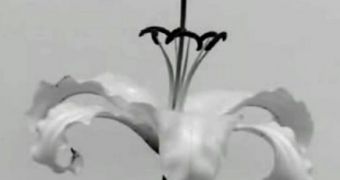A team of physicists at the Harvard University recently conducted a research on lily flowers, in order to determine how they bloom in the spring. The experts were able to identify the forces at work within the plant, as well as the processes that precede the actual blooming phase.
Most interestingly for them was finding out how the forces needed to uncurl the petals were generated from seemingly nothing. The team used the Asiatic lily (Lilium casablanca) as a test subject.
Researches published their discoveries in the March 21 online issue of the esteemed journal Proceedings of the National Academy of Sciences (PNAS). The main conclusion is that the skewed growth at the edges of petals are what primarily drive the blossoming.
According to the study, the processes that allow the lily to open begin to pick up their pace about four and a half days before the flowers bloom. The first stage is for the young buds supporting the flower to begin sucking up water very slowly.
They continue to do so until they look like they're ready to explode. When a certain threshold is reached, petals and sepals begin to steadily and gradually invert. As they do so, the peel down like a banana, until the blossoming is complete.
Sepals are the outer portions of the flower, which are usually green. They open at the same time the petals do, the Harvard team learned. But what surprised the team was the speed at which the plant moved during this process.
Unlike the snappy Venus flytrap, the Asian lily flower moves very slowly upwards, explains Stanford University biologist Jan Skotheim, quoted by Science News. “In the blooming lily, you don’t have an explosive snap,” he says.
The expert conducted the work with Harvard physicist L. Mahadevan, who is the other coauthor of the study. These are the same two experts that discovered the biophysical mechanism behind the Venus flytrap's snare. That study was conducted in 2005.
“Infusing a scientific aesthetic into a thing of beauty only enhances our appreciation of it. This is what we try to do as scientists,” Mahadevan says. He and his colleague urge other scientists to start looking into the physics of flower growth as well, as there are still many new things to discover.

 14 DAY TRIAL //
14 DAY TRIAL //